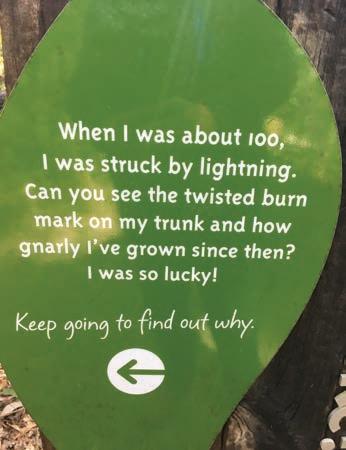
3 minute read
Struck but still standing
Allowing life’s tough times to shape but not break us
Words Jo-anne Brown
Advertisement
Sometime around the year 1600, when Shakespeare was writing his sonnets, Galileo was looking at the moons of Jupiter through his telescope, the Taj Mahal was being built, and Bach and Handel were not yet born, a seed began to sprout on Quandamooka country – now known as the Redlands in Queensland.
The shoot grew into a strong and healthy tallowwood tree, a species of eucalypt, providing home to a variety of animals, especially koalas. It continued growing for decades, for 150 years or more, and then it was struck by lightning. The tree wasn’t destroyed, but it was damaged, and as it began to recover it grew crookedly and took on its own unique shape.
When early settlers arrived in the region in the mid-1800s, they began using tallowwood trees – known for the hardness of the wood – in the production of coaches, in particular wheel spokes, and docks and piers. It’s likely that this particular tallowwood tree survived the timber cutters precisely because it was crooked, and therefore not suitable for use.
Today this tree, with its distinctive hollow limbs, is the oldest known tree in the region and continues to be home to a number of native animals including possums, gliders, birds, insects and reptiles.

Survival In Brokenness
I love this story of survival in brokenness. I love that because this tree was
‘flawed’ (in the eyes of the timber cutters) it was not destroyed and continues to be home to a multitude of animals. I love that its crookedness in no way detracts from its purpose in life – to offer shade, shelter, a nesting and resting place.
And it is a beautiful tree! Since there are so few trees in this area that are as old or as large as the tallowwood, it plays an important part in the local ecosystem. In every organism, including this tree, there is an innate ability and desire to keep growing, developing, to keep moving towards what it was created to be. Even when faced with stressors that can cause damage, or obstacles to slow growth, that innate ability to keep developing remains.
When I look at this tree, noticing its unique shape that came about because of the damage it endured, I like to think that I too have a natural beauty and strength that arises from the ‘lighting strikes’ I have faced. Every stressful or difficult experience leaves its mark upon my very being. Some of those painful events have forced me to change direction in my life, or to dig deeper to stay strong and to keep growing. They have all changed me in some way.

A Place Of Growth And Refuge
Admittedly, there have been times when I have felt pretty much bent out of shape, when I felt broken and not much good for anything. And yet somehow I have kept going and kept growing. Some things haven’t worked out the way I had planned – yet often those outcomes have been far more enriching than the ones I had hoped for.
I hope that in allowing the difficult experiences of my life to shape me rather than break me, I can become like this tallowwood tree – a place of refuge and safety for others, despite any peculiarities or perceived flaws.
You might like to think about your own life and how you have survived various ‘lightning strikes’ that have hit you or damaged you. Perhaps you are aware of how stressful events have impacted you and yet enabled you to grow stronger, more compassionate, more patient.
You too have your own unique shape and character precisely because of all that you have experienced and survived in your life, and the person you are still becoming even in the midst of pain and uncertainty. It may not be the shape you originally chose or hoped for, but it will be the shape that has the potential to offer something affirming to those around you, just as the gnarled tallowwood tree has become a place of safety and shelter. Having faith, even just a small amount, can help us to see that even in the darkest times we are not alone, and whether we know it or not, hope is at work within us.
Scan here to read more stories of hope.



